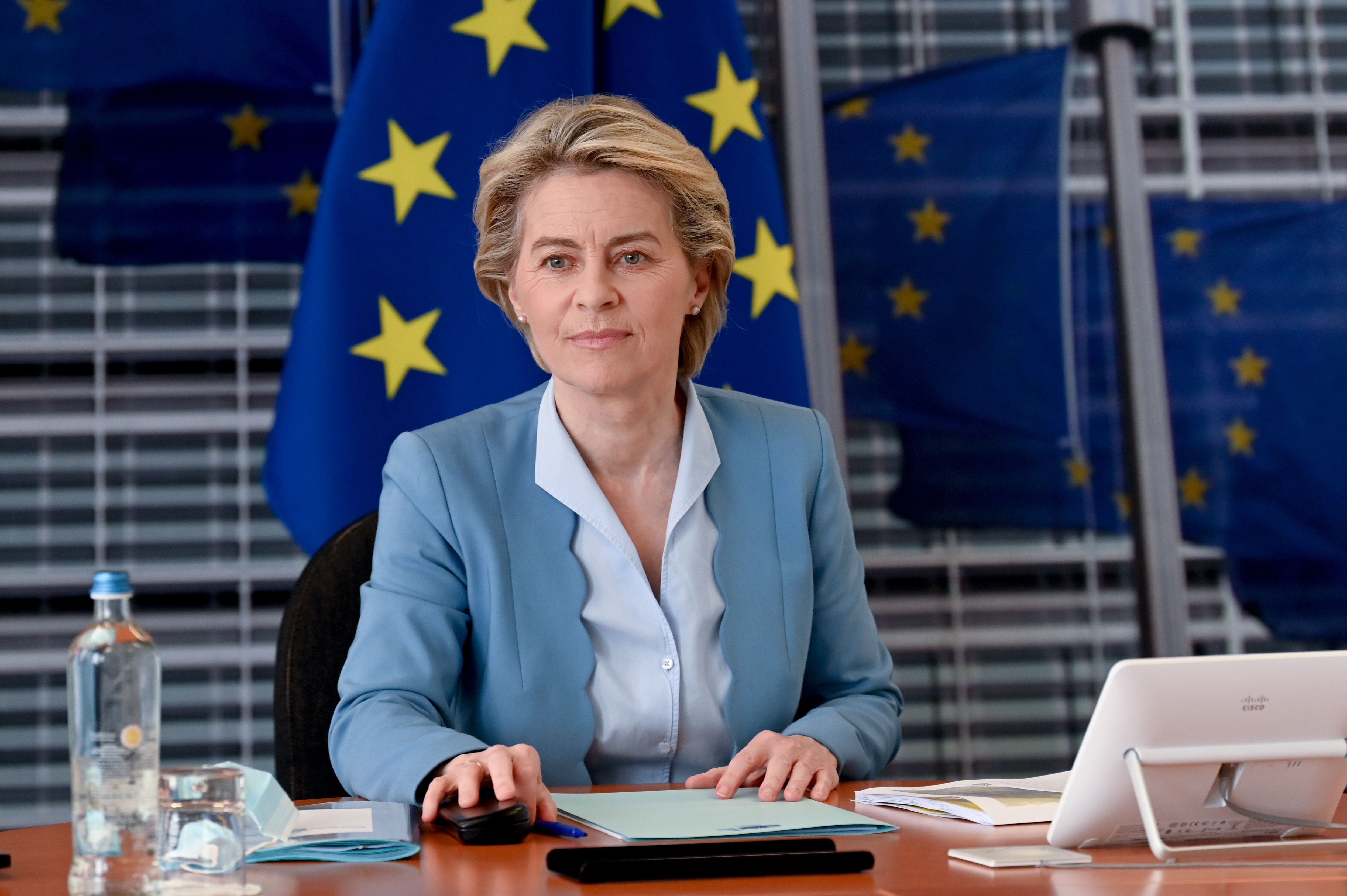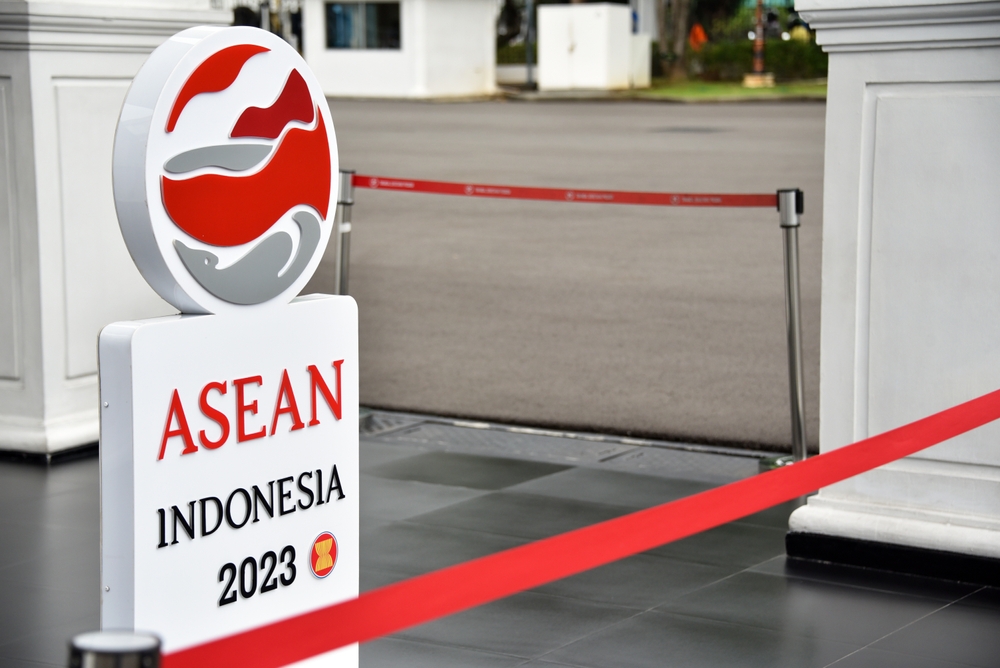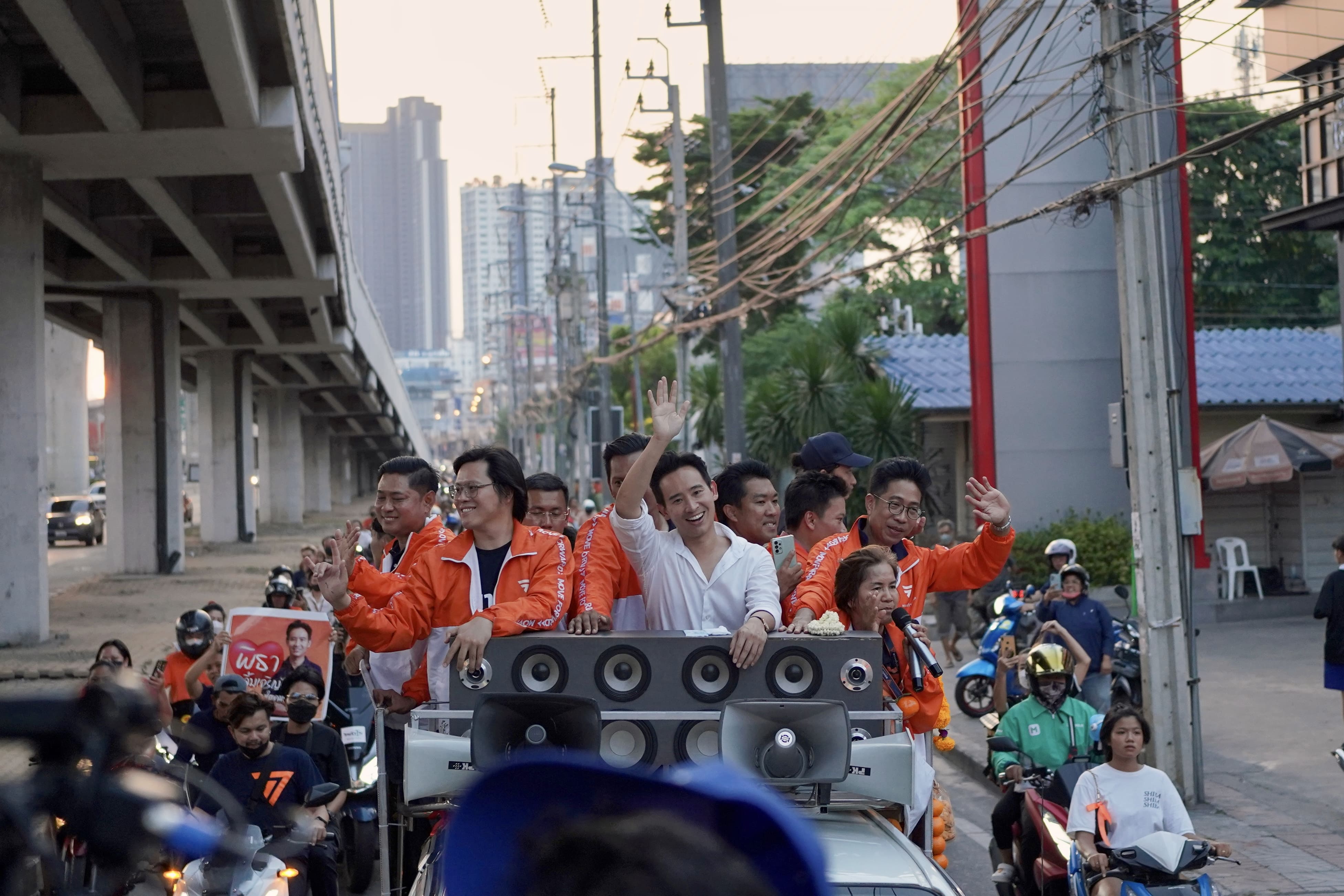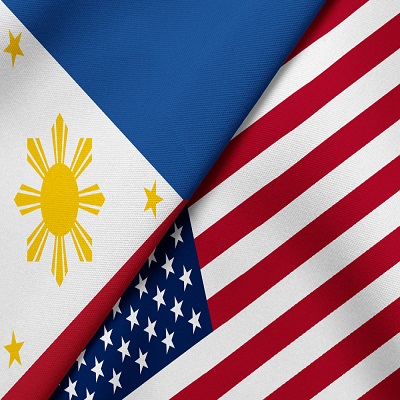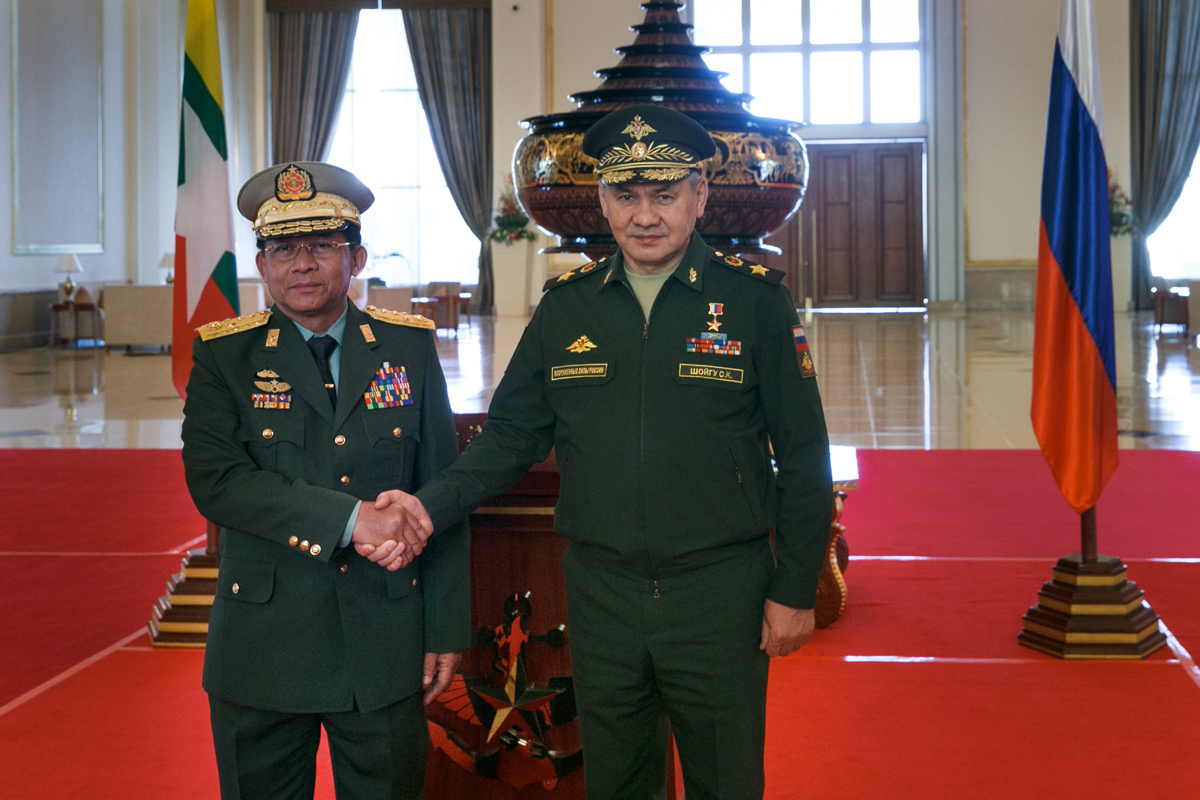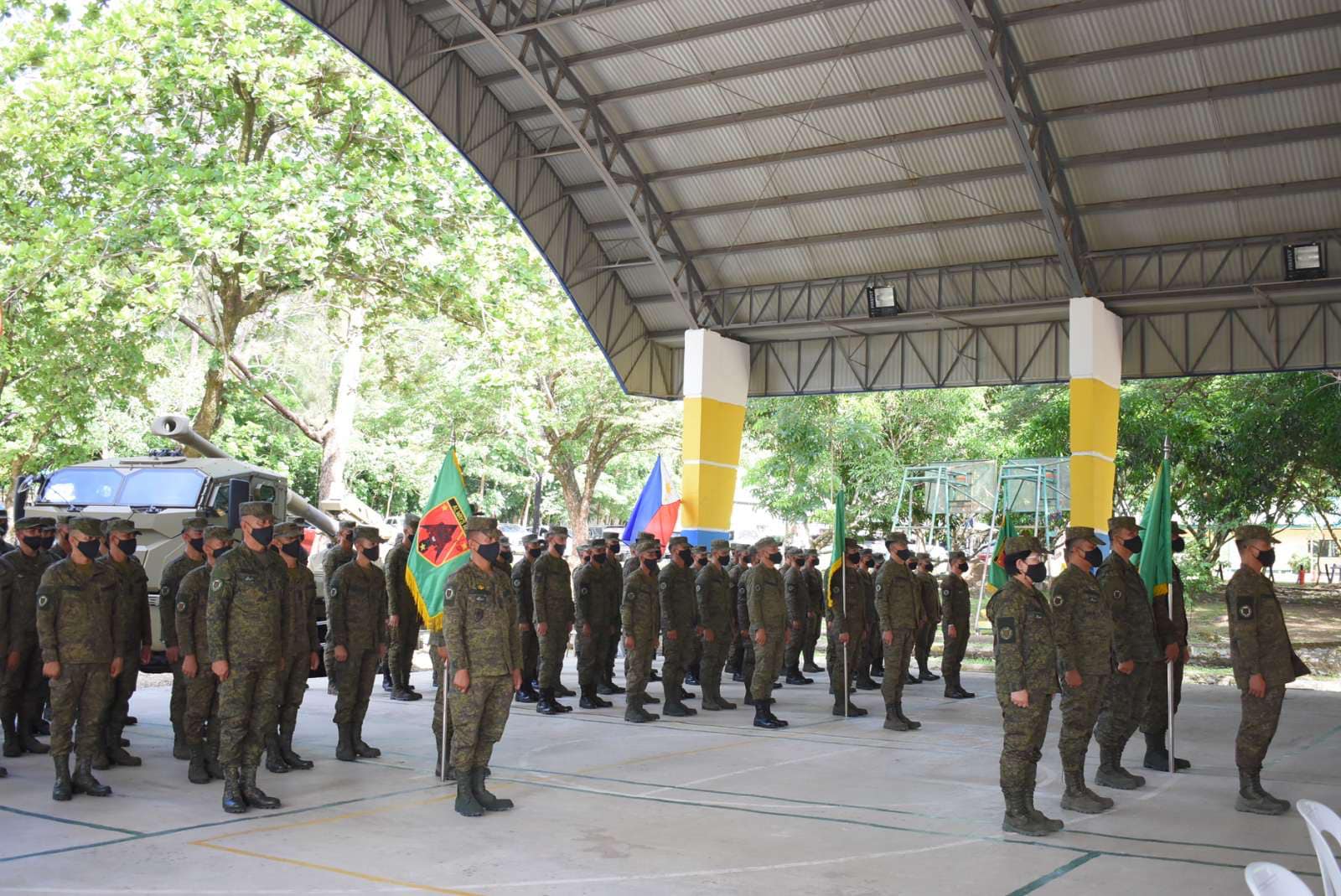Why China Supports the Southeast Asia Nuclear Weapon-Free Zone
by Hoang Thi Ha
Since 1999, China has expressed its readiness to sign the SEANWFZ Protocol and is the only Nuclear Weapon State willing to do so without reservations. This Long Read explores China’s strategic considerations behind this stance. INTRODUCTION The Southeast Asia Nuclear Weapon-Free Zone (SEANWFZ) or Bangkok Treaty was signed on 15 December 1995 by the ten Southeast Asian states and entered into force on 28 March 1997. The States Parties to the Treaty are therewith obliged to ensure peaceful use of nuclear energy, and not to develop or acquire nuclear weapons, test nuclear explosive devices, or dump radioactive wastes within the zone. The Treaty includes a Protocol that is open to accession by the five recognised Nuclear Weapon States (NWS or P5), namely China, France, Russia, the United Kingdom (UK) and the United States (US), whose support and recognition are critical to the efficacy of SEANWFZ. The NWSs’ accession to the Protocol would entail their obligation to respect the Treaty, refrain from acts that may violate the Treaty, and provide negative security assurances (NSA), i.e., not use or threaten to use nuclear weapons against the SEANWFZ States Parties and within the zone. SEANWFZ is one of five nuclear weapon-free zones (NWFZ), which are seen as providing “the regional pathway” towards the ultimate goal of a nuclear weapon-free world. SEANWFZ was also considered an interim measure towards achieving the 1971 Zone of Peace, Freedom and Neutrality (ZOPFAN). Spearheaded by Malaysia, ZOPFAN aimed to achieve a Southeast Asia “free from any form or manner of interference by outside powers” but its realisation has been elusive, given that Southeast Asia is historically and geographically intertwined with the major powers’ strategic interests, and some regional states still maintain security alliances or close security ties with external powers. ZOPFAN’s ahistorical idealism was embedded in SEANWFZ’s key provisions regarding its expansive geographical coverage and the extensive scope of the NSA. This is the underlying reason for the lack of progress in getting the P5 – except China – to sign its Protocol up to now. China has been an outlier among the P5 in that it has expressed its intent to sign the Protocol since the late 1990s, shortly after the Treaty’s entry into force. The regional security environment has since deteriorated drastically with the intensification of US-China strategic tensions. Yet, China’s interest in SEANWFZ remains strong, and arguably has even increased as it sees itself as the target of a US-led strategy of “containment, encirclement and suppression”. This Perspective examines the legal and geopolitical intricacies of SEANWFZ that underlie China’s longstanding willingness to sign its Protocol in contrast to other NWSs. It argues that beyond non-proliferation considerations, supporting SEANWFZ serves China’s security interests amid its heightened tensions with the US and its allies. THE LONG JOURNEY OF GETTING THE P5 TO SIGN THE PROTOCOL The SEANWFZ States Parties – which are also the ten ASEAN member states – have held many consultations with the NWSs to persuade the latter to accede to the Protocol. The NWSs have objections and concerns regarding some substantive provisions of the Treaty and its Protocol (Table 1). • Expansive geographical scope Article 2 of the SEANWFZ Treaty states that the Treaty and its Protocol shall apply to the territories, exclusive economic zones (EEZ) and continental shelves (CS) of its States Parties. The inclusion of EEZ and CS is a unique feature of SEANWFZ that exceeds the standard coverage of only territories as in other NWFZs. It also goes beyond the 1982 United Nations Convention on the Law of the Sea (UNCLOS) which prescribes the sovereign rights of a coastal state only with respect to the living and non-living resources in its EEZ and CS. The legal regime of EEZ and CS under UNCLOS is a delicate balance between the rights of coastal states and the freedoms of ocean user states. It remains a subject of contention between the majority of UN members, which hold that all states have the right to conduct military operations in any EEZ, and a minority of around 20 states (including China and some Southeast Asian states such as Indonesia, Malaysia and Thailand), which impose restrictions on military operations by foreign powers in their EEZ. The inclusion of EEZ and CS in the geographical coverage of SEANWFZ is even more problematic due to the unresolved competing territorial and maritime claims in the South China Sea (SCS) among some Southeast Asian states and China. • Port visits and transit rights Article 3.2 of the Treaty forbids a State Party from developing, manufacturing, possessing, having control over, stationing, transporting, testing or using nuclear weapons. The US, UK and France maintain that there is a conflict between this article and Article 7 on the prerogative of a State Party to allow visits by foreign ships/aircraft to its ports/airfields or their transit in its territorial sea. These NWSs want to ensure that the Treaty would not impinge on their port visits and transit rights in the region (since these NWSs maintain the policy to neither confirm nor deny [NCND] the presence of nuclear weapons at a given location, the possibility that their visiting/transiting ships/aircraft in the region are nuclear-armed cannot be entirely ruled out). They insist on a clarification to ensure that Article 7 takes precedence over Article 3.2.• Extensive negative security assurances The NSA clause in the SEANWFZ Protocol requires that the NWSs commit not to use or threaten to use nuclear weapons against any SEANWFZ State Party and not to use or threaten to use nuclear weapons within the zone. The latter part – “within the zone” – is problematic to the NWSs on two levels. First, the geographical application of SEANWFZ is not only expansive (involving the EEZ and CS of its States Parties) but also indeterminate (because of the territorial and maritime disputes in the SCS). Second, it would mean that an NWS cannot use nuclear weapons against another NWS within this expansive and indeterminate zone and cannot use nuclear weapons from within this expansive and indeterminate zone against targets outside the zone. This is well beyond the NSA that the NWSs traditionally extend to other NWFZs, which is limited to not using or threatening to use nuclear weapons against the territories of the zonal countries. • China’s sovereignty and maritime interests Unlike France, Russia, the UK and the US (the P4), China rarely stakes out its position with regard to the above-mentioned outstanding issues. China’s only stated concern vis-à-vis SEANWFZ is that the Treaty and its Protocol might contradict or undermine its territorial and maritime rights and interests in the SCS. To address this concern, during the consultations in 2010-2012, the SEANWFZ States Parties and China agreed that they would sign a Memorandum of Understanding (MoU) stating that the Treaty and its Protocol shall not affect their respective territories, EEZ and CS. Table 1: Outstanding Issues Regarding NWS’s Accession to the SEANWFZ Protocol Source: Author Despite several consultations between the SEANWFZ States Parties and the P5 held in the late 1990s and early 2000s, these outstanding issues were not resolved, and the matter was put on the backburner. The momentum to get the P5 to sign the Protocol was revived in 2010-2011, in part due to the importance that the Obama administration accorded to strengthening the international non-proliferation regime. To address the outstanding issues, the SEANWFZ States Parties and the P5 negotiated a revised Protocol to the effect that: (i) in the EEZ and CS of the SEANWFZ States Parties, the P5 shall adhere to only Article 3.3 of the Treaty that bans the dumping of radioactive material/wastes; (ii) the SEANWFZ States Parties shall retain the prerogative to allow port visits and transit of foreign ships/aircraft pursuant to Article 7; and (iii) the P5’s NSA commitment shall be limited to not using or threatening to use nuclear weapons against the SEANWFZ States Parties. The scheduled signing of the revised Protocol by the P5 in July 2012 was forestalled by the reservations lodged at the eleventh hour by France, Russia and the UK. Some reservations by France or the UK state that accession to the Protocol shall not impair a NWS’ right of self-defence; a NWS can retract/review its obligations vis-à-vis a SEANWFZ State Party that ceases to be a party to the NPT, or breaches its non-proliferation obligations under the SEANWFZ Treaty, or develops other weapons of mass destruction. The most controversial reservation was made by Russia, which stated that it would not consider itself bound by the Protocol if a Southeast Asian state allowed foreign ships/aircraft carrying nuclear weapons to enter its territorial waters/airspace or to visit its ports/airfields. Given the NCND policy of some NWSs, the Russian reservation would put undue pressure on the SEANWFZ States Parties and challenge their prerogative to exercise their rights under Article 7. Due to the objection of some SEANWFZ States Parties to some or all of these reservations, the P5’s accession to the Protocol was put on hold, and the issue has been in hiatus since 2012. CHINA’S POSITION AND INTEREST VIS-À-VIZ SEANWFZ China’s readiness to sign the Protocol is a longstanding position that was registered as early as 1999. Beijing has indicated on various occasions that it is willing to be the first NWS to sign the Protocol, and to do so without reservations. The Chinese intent was reiterated by Chinese Foreign Minister Qin Gang during his meeting with the ASEAN secretary-general in March 2023. This article argues that China adopts a favourable approach towards SEANWFZ because the Treaty fits in with its nuclear doctrine and national security strategy, and accession to the Protocol could provide both geostrategic and diplomatic dividends for China. China’s No First Use policy China’s nuclear doctrine has been evolving in keeping with its growing nuclear capabilities and the changes in its external security environment. Yet, it still retains the self-defensive posture and the policy of unconditional No First Use (NFU) of nuclear weapons, which is reiterated in China’s 2019 Defence White Paper: “China is always committed to a nuclear policy of no first use of nuclear weapons at any time and under any circumstances, and not using or threatening to use nuclear weaponsagainst non-nuclear-weapon states or nuclear-weapon-free zones unconditionally (emphasis added).” To China’s credit, it is the only P5 country maintaining an unconditional NFU policy, which makes the Chinese nuclear doctrine less aggressive than those of other NWSs. Since China’s NSA commitment to Southeast Asian countries is well within the bounds of its NFU policy, its accession to the Protocol is more straightforward than that of the P4. China’s sea-based nuclear force China’s self-defensive nuclear policy seeks to maintain a “lean and effective” nuclear deterrence based on first-strike survival and second-strike capabilities. In the nuclear triad of an NWS – i.e., land-based nuclear missiles, strategic bombers, and ballistic missile submarines (SSBNs) – SSBNs are considered “the primary guarantor of second-strike capabilities” given their advantages in stealth and survivability. However, noisiness is the Achilles’ heel of Chinese SSBNs – from the Type 092 Xia-class in the 1970s-1990s to the newer Type 094 Jin-class – which makes them vulnerable to anti-submarine warfare and limits their ability to navigate far beyond the Chinese shores. It should be noted that the Chinese submarine fleet is home-ported at Yulin Naval Base on Hainan Island in the SCS; given its expansive claims in the SCS, China could justify the presence and operations of its SSBNs in these waters as falling well within its sovereignty and jurisdiction. Meanwhile, if the P4 respected the expansive geographic coverage of the SEANWFZ Treaty and the extensive NSA in the original Protocol – which is extremely unlikely, if not impossible – it would significantly undercut the deployment of their nuclear assets – particularly SSBNs – in a large swathe of maritime area in China’s southern vicinity, which would in turn enhance China’s strategic security and the defence of its sea-based nuclear deterrence. China’s anti-access/area-denial strategy China’s support for SEANWFZ is rooted in the strategic assessment that such an extended zone – if implemented – would contribute to the country’s anti-access/area-denial (A2/AD) strategy which is aimed at denying the military power projection of superior adversaries in China’s near neighbourhood. Apart from investing in anti-ship, anti-air, anti-ballistic weapons and anti-submarine capabilities for its A2/AD system, China has also fostered regional arrangements and agreements that could be leveraged to delegitimise or discredit the military presence of foreign powers in the region. These include the SEANWFZ Treaty, as well as China’s proposal for a treaty on good neighbourliness, friendship and cooperation with ASEAN, China’s attempt to prevent Southeast Asian countries from conducting military exercises with foreign powers through a code of conduct in the SCS (COC), and its recent Global Security Initiative that embraces the ‘indivisible security’ concept. China’s sovereignty and maritime claims in the SCS Theoretically, if all NWSs accede to the SEANWFZ Protocol, they would be bound by the same legal obligations therein. However, the strategic security effect for the P4 and China would be significantly different because only the latter is located within the region. While the P4 are concerned about the undefined geographical scope of the zone due to the ongoing territorial and maritime disputes in the SCS, such ambiguity may work to China’s advantage. China has excessive sovereignty and maritime claims within its Nine-Dash Line that covers around 90% of the SCS. The coverage of China’s claims has been extended further with its ‘Four Sha’ concept whereby China asserts all maritime zones, including internal waters, territorial seas, contiguous zone, EEZ and CS, based on the so-called “four outlying archipelagos” in the SCS (Pratas, Paracels, Spratlys and Macclesfield Bank), which it is not allowed to do under UNCLOS as a continental state. China has demanded that an MoU be signed to ensure that neither the Treaty nor the Protocol shall affect its territory and maritime entitlements. This would effectively guarantee China’s free hand in defining the geographical scope of SEANWFZ in a flexible and selective manner that best serves its interests. For example, China may challenge nuclear deployments of other NWSs in the zone as violations of SEANWFZ but it can justify the presence of its nuclear assets in the zone on the grounds that such deployment takes place within China’s (claimed) territory and jurisdiction. Responsible nuclear weapon state discourse Since France, Russia, the UK and the US do not accept the extraordinary terms of the SEANWFZ Treaty and its original Protocol regarding the inclusion of EEZ and CS and the NSA commitment within the zone, SEANFWZ has no legal effect in preventing these countries from deploying their nuclear assets in regional waters beyond the territories of its States Parties. However, by signalling its readiness to sign the Protocol first and without reservations, China can turn SEANWFZ into a discursive and political weapon to project itself as a responsible nuclear power and claim the moral high ground in criticising the nuclear policy of the US and its allies as well as their nuclear assets in regional waters. Hence, SEANWFZ – and China’s interest in signing its Protocol – has gained greater salience in China’s regional diplomacy after the launch of the Australia-UK-US (AUKUS) tripartite security partnership in 2021, which aims to provide Australia with nuclear-powered (but conventionally armed) attack submarines. The Chinese government believes that AUKUS would “form an underwater military encirclement against China”. It has also argued that AUKUS violates the nuclear non-proliferation regime and has invoked SEANWFZ to criticise the deal. In March 2023, the Chinese foreign ministry spokesperson said that AUKUS “undercuts ASEAN countries’ effort to establish SEANWFZ and seriously undermines the ASEAN-centred regional cooperation architecture in East Asia”. Chinese commentaries state that China’s willingness to sign the Protocol is a manifestation of its “due responsibility as a major power that seeks peaceful development” and contrasts its position with the “irresponsible behaviours of the AUKUS countries”. CONCLUSION The SEANWFZ States Parties maintain a longstanding position that all outstanding issues with the NWSs should be resolved in a ‘package deal’ so as to enable their accession to the Protocol concurrently. Therefore, China has not been able to sign the Protocol despite its express intent to do so for decades. However, the rapidly deteriorating global strategic environment may warrant a rethink by the SEANWFZ States Parties on the ‘package deal’. The US and Russia – the two largest nuclear powers – have taken steps to walk back from their arms control obligations, including US withdrawal from the Intermediate-Range Nuclear Forces (INF) Treaty and Russia’s suspension of its participation in the New START. Closer to home in East Asia, the race to develop nuclear capabilities is gathering pace. China is expanding and upgrading its nuclear arsenal and may become an atomic peer of the US and Russia by the 2030s, according to the US’ 2022 Nuclear Posture Review. America’s withdrawal from the INF raises the concern that Washington may introduce short-range ballistic and cruise missiles in Asia. The US’ Asian allies, while stopping short of developing nuclear weapons, are re-arming themselves to deal with nuclear threats (Australia with nuclear-powered attack submarines, Japan with counter-strike capabilities, and South Korea with submarine-launched ballistic missiles and its public debate on the need to acquire nuclear weapons). They are also seeking to consolidate the US’ nuclear deterrence umbrella in the region. Most ominously, Russia’s nuclear blackmail in its war against Ukraine draws home the vulnerabilities of non-nuclear-weapon states in the face of great-power bullying. Against this backdrop – and with China’s diplomatic activism – the SEANWFZ States Parties may drop the ‘package deal’ approach to pave the way for China’s accession to the Protocol. After all, it is a common practice that NWSs accede to other NWFZs’ protocols at different points of time. Apart from China’s NSA – which is already covered under its NFU policy – China’s accession would add a legal guarantee that it would not dump radioactive wastes in the zone, exert political pressure on other NWSs to follow suit, and raise the profile of SEANWFZ at a time when “the risk of nuclear weapons use is higher than at any time since the Cold War”. Yet, China’s accession would raise several legal and policy questions for the SEANWFZ States Parties. First, should China sign the original Protocol or the revised Protocol? Since the original is a non-starter for the remaining NWSs, using the revised Protocol would minimise legal complications when the SEANWFZ States Parties re-negotiate with them in the future. It is also important to ponder the implications of the above-mentioned MoU which would give China a free hand in defining the geographical scope of SEANWFZ in ways that serve its interests, possibly at the expense of those of SEANWFZ States Parties and other NWSs. Last but not least, China’s accession to the Protocol would be a strategic and diplomatic win for Beijing in its enduring quest to displace external military power from the region. In the final analysis, China values SEANWFZ not only because it is a regional non-proliferation regime per se but because its terms serve China’s strategic security in discrediting the nuclear forward deployment by foreign powers in China’s near neighbourhood. Now, as before, SEANWFZ States Parties remain confronted with the chasm between their nuclear weapon-free aspirations and their security interests from a balance of power in the region. This is as much a problem of strategic incoherence among the States Parties themselves as it is about their substantive differences with the NWSs.
 Versus the Powers that Be-THUMBNAIL.jpg)









